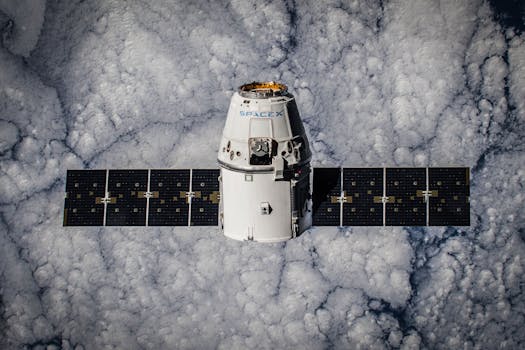
The Future of Satellites: Revolutionizing Global Communication and Exploration
The future of satellites is transforming the way we communicate, navigate, and explore space. With advancements in technology, satellites are becoming more efficient, cost-effective, and versatile. The focus keyword Future of satellites is becoming increasingly important as we rely on these orbiting devices for a wide range of applications, from telecommunications and weather forecasting to Earth observation and space exploration.
Advancements in Satellite Technology
One of the most significant advancements in satellite technology is the development of small satellites, also known as CubeSats. These tiny satellites, which are typically the size of a shoebox, are much cheaper to launch and operate than traditional satellites. They are also more agile and can be easily upgraded or replaced, making them ideal for a wide range of applications, including Earth observation, communications, and scientific research.
Another area of advancement is in the development of advanced propulsion systems, such as electric propulsion and advanced ion engines. These systems allow satellites to travel farther and longer, using less fuel and increasing their overall efficiency. This has opened up new opportunities for deep space missions, such as the exploration of Mars and the outer planets.
Applications of Satellites
Satellites have a wide range of applications, including telecommunications, navigation, weather forecasting, Earth observation, and space exploration. Telecommunications satellites, for example, provide internet connectivity, phone services, and television broadcasting to remote and underserved areas. Navigation satellites, such as GPS, provide location information and timing signals that are essential for modern transportation and commerce.
Weather forecasting satellites, such as geostationary and polar-orbiting satellites, provide critical data on weather patterns, storms, and climate change. Earth observation satellites, such as Landsat and Sentinel-2, provide high-resolution images of the Earth’s surface, which are used for a wide range of applications, including agriculture, forestry, and disaster response.
Challenges and Opportunities
Despite the many advancements in satellite technology, there are still several challenges and opportunities that need to be addressed. One of the biggest challenges is the growing problem of space debris, which poses a significant threat to the long-term sustainability of space exploration. There is also a need for more efficient and cost-effective launch systems, as well as more advanced propulsion systems that can take satellites farther and longer.
However, there are also many opportunities for innovation and growth in the satellite industry. The development of new technologies, such as satellite constellations and mega-constellations, is transforming the way we communicate and navigate. There is also a growing demand for satellite-based services, such as satellite internet and satellite-based Earth observation, which is driving investment and innovation in the industry.





